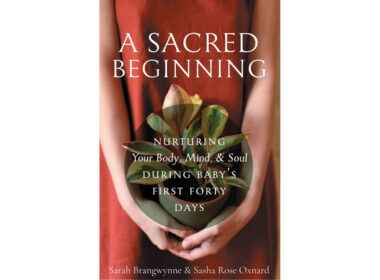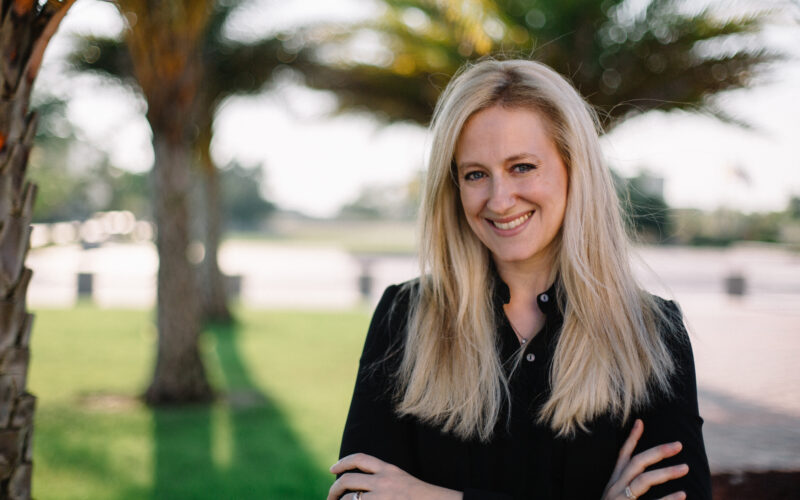With increasing frequency and from various sources, we hear and read that American women are having fewer children, mirroring childbearing trends seen across the world. In 1960, the average American woman had 3.5 children, according to the CDC. As of 2000, she had 2.0, already below the 2.1 “replacement level” a society needs to offset the deaths of older members. But by 2020, the average woman had just 1.64 children. The economic and social consequences of this already-upon-us “demographic winter” have yet to be truly felt, which may be why our government has not made any attempts to raise the total fertility rate (births/woman’s lifetime) as our European counterparts have (unsuccessfully) done.
Even as the vast majority of U.S. women have fewer and fewer children, another statistic has remained virtually unchanged since 1990: 5 percent. That’s the estimated number of women aged 40-44 who have five or more children. In her book, Hannah’s Children: The Women Quietly Defying the Birth Dearth, Catholic University of America economist and mother of eight Catherine Ruth Pakaluk (and her assistant researchers) interviewed dozens of these women who are bucking the societal trend of 1.64 births/woman. Far from being a dry, academic exposé, Hannah’s Children is a deeply personal look into the lives of these ordinary-yet extraordinary women. It’s a book about “the reasons [these women] wanted kids and the reasons they kept wanting them;” their “reasons of the heart” (Pakaluk, 9).
Here at Natural Womanhood, we often write about how effective fertility awareness methods or natural family planning can be for women and couples seeking to avoid pregnancy. But we also know that many of our readers have utilized fertility awareness or NFP to achieve pregnancy. At a minimum, fertility awareness leads to an appreciation for our fertility, and countless of our readers have found that this appreciation expands to value the natural fruit of that fertility: children. I spoke via Zoom to Pakaluk about her own experience with fertility awareness, what she wishes she had known about it in her twenties, and what led her to first become one of “the 5 percent” herself—and then to study her peers for Hannah’s Children.
Her own upbringing prepared her to have a large family
Pakaluk herself was the oldest of 9 children, and “my mom loved having a large family and talked about it a lot.” While Pakaluk doesn’t specifically recall her mom using the term “natural family planning” or “NFP,” she does remember the 500-page NFP textbook “The Art of Natural Family Planning” written by John and Sheila Kippley sitting on the family bookshelf. Pakaluk shared that her mother was the daughter of an Iowa family with farming roots and an avid supporter of breastfeeding to space pregnancies. She observed, “I think it appealed to her that as a young, Catholic woman starting out her family, she was going to work with the natural rhythms of her body.”
Pakaluk noted, “That was the environment I grew up in. When I got married, I didn’t have any reason to not think [having a large family] was lovely. As a kid I really loved having a lot of siblings and as the oldest I loved when the babies came home.”
Natural family planning held little appeal for her at first
Married at age 23, Pakaluk remembered that her local parish offered a natural family planning class for engaged couples, but she was uninterested at the time. “I remember my church offering a course in natural family planning, but I remember thinking ‘well, we want to have kids, so maybe we’ll look that up when we don’t want to have kids anymore.’” NFP seemed “technical” and she thought “I don’t want to start charting it all out right now, we’re just in love and want to get married. When I need it, I’ll find out about it.” Now, Pakaluk says, “I think everybody should track cycles early… but I would definitely say that I think part of my resistance to learning NFP methods when I was early in my marriage was that it sounded technical and unromantic.”
“I think everybody should track cycles early… but I would definitely say that I think part of my resistance to learning NFP methods when I was early in my marriage was that it sounded technical and unromantic.”
At the beginning of their marriage, she and her husband wondered whether they should wait to have children
When they got married, some might have said Pakaluk and her husband already “had their hands full.” Pakaluk said, “My husband was a widower, so we had 6 kids at home, and we were a little apprehensive, like ‘will it be good or healthy for everybody to have a new [little] one?’ We thought that was a big question to answer and we thought ‘well, children are usually good.’ And some people said ‘maybe you should wait’ and we thought ‘we’ll give it a couple months and we’ll see what happens and how the kids are. And if we haven’t conceived by then, we’ll take that as God’s sign.’”
Still, the Pakaluks hoped “that we would be able to accept blessings from God soon” and indeed “We got pregnant right away, on our honeymoon. We thought that was great.”
Pakaluk spoke candidly, “And that really informed a lot of my thinking about kids later. After [my son] was born, he was such a source of healing and bonding for this grieving family that it really changed my sense of the kind of prudence we should apply to having children. Of course, I still think we should be prudent, people should be prudent, and that every family is different, but it was a very palpable experience of the way a baby can bring joy and healing in circumstances that might otherwise look challenging.”
Pakaluk and her husband welcomed eight children together
“So [my first] was born and then we really just didn’t think we needed to space [pregnancies] after that, once you see that your baby is absolutely the best thing for these grieving children and for your wholeness as a new family.” Pakaluk’s next children came 18 months, 24 months, and 26 months after their respective preceding siblings without any kind of intentional spacing beyond breastfeeding. Throughout that time, “We were never in a position where we felt we had to wait or space. I think that was about that way through the 5th.”
By the time Pakaluk conceived her 5th and 6th children, she was in her mid-30s and had experienced several miscarriages. It was then she started tracking her fertility with basal body temperature (BBT) readings, inputted into an app called Fertility Friend.
Once she started charting her cycle, Pakaluk found it was different from what she’d feared
Pakaluk smiled, saying, “Remember those Kippley books that I had lying around [growing up]? I had this idea that you were recording amounts of mucus every day and that just sounded terrible to me! I don’t want to do that. It just sounds yucky.” In her case, tracking her basal body temperature (BBT), starting in her mid- to late-30s, was enough to gauge her fertility effectively. “For what I needed to do, I didn’t need to pinpoint things that carefully. Just my temperature was highly revealing of what was going on.”
What’s more, she found, as is normal, that her fertility had already begun to decline by her mid- to late-30s. “By the time I was tracking, I wasn’t really that fertile [anymore]… I found it a lot harder to conceive… [so] by the time I felt the need to space my pregnancies, I wasn’t actually that fertile. But at that time, I learned that tracking my temperature was enough. And that wasn’t so hard and that wasn’t gross.”
What she wishes she’d known when she was younger
Asked what she wishes her younger self knew, Pakaluk responded by telling me what she wants her 18-year-old daughter to know: “I think she should track and get a sense of her temperature and her [body’s hormonal] rhythms even if she’s not planning to have babies soon, because I think part of my own resistance was ignorance of how easy it would be to track… I would have liked to have known that it’s easier than I thought.”
Especially with newer methods of NFP like the Marquette Method that use urinary hormones, “You don’t have to measure your mucus strings and ask ‘Is it an inch? Is it two inches?’ That could be off-putting.”
Of the women Pakaluk studied, some used fertility awareness, while others used birth control or did not intentionally space their pregnancies
In the women she studied for Hannah’s Children, Pakaluk found a range of ways couples used to plan (or not) their family size, ranging from utilizing fertility awareness to hormonal birth control to no method at all. She summarized, “They did not all reject contraception, but they all rejected a kind of mentality that goes with it, like an overly planned parenthood. I don’t know what that means, except to say that they all had different reasons for believing that their fertility was one of the greatest gifts they had.”
She went on, “And so though they resorted to different ways of spacing their children, they were all eager to welcome as many as they could. They viewed their contraceptive means as unfortunate things you had to do when you weren’t able to accept the next child, not like great tools as sources of ‘I can really be liberated.’”
Cycle charting tells you about your whole-body health as a woman
This truly hits home the need for better information for couples–even those so radically open to children as the women profiled in Hannah’s Children–about fertility awareness methods. Women deserve to know that there are ways to space children that will respect their fertility and health–in truth, who they are as women.
For Pakaluk, cycle charting puts a woman in touch with her core, her true self. Nowadays, “We don’t know what it is to be a woman [even though] we talk about body positivity and acceptance of our bodies.” From fertility awareness or NFP, “ You learn deeply that to be a woman, your [physical] maturity, your health as a woman is inseparable from this capacity to receive and bear life… Healthfulness for women is also correlated with when our systems are going right, our endocrine system, our digestive system, and we know gut health is so key.”
She continued, “A lot of times when something is misfiring, the first symptom is that our fertility is off-the-rails. So actually it’s a great diagnostic in a sense, and [the fact] that it is a great diagnostic teaches us something really deeply about what we are.”
“A lot of times when something is misfiring, the first symptom is that our fertility is off-the-rails. So actually it’s a great diagnostic in a sense, and [the fact] that it is a great diagnostic teaches us something really deeply about what we are.”
She continued, “We start to see ‘oh, that’s so cool, so interesting.’ Like when my tummy feels good and my digestion is working and my body is being nourished by what I’m eating, I’m also able to have babies, like whoa! Wait! Wow! And when my tummy doesn’t feel good and my digestion is bad and I’m maybe eating bad things, I’m putting on weight, I’m not in good shape. All those things, which are just symptoms of modern society, all those things affect fertility. So that’s what I’d tell my daughter.”
Hannah’s Children interviewees: The capacity to bear life is fundamental to our womanhood
Pakaluk summed up, “I do think so much of modern life eats away at the natural pride a woman can take in her capacity to bear life. She’s like a vessel. It’s almost like there’s no word for that because it’s an internal thing. The world measures external achievements and this is different, an internal capacity. So you can’t flaunt it or show it off.”
Through Hannah’s Children, Pakaluk hopes she can translate the motivations of women whose pride in their capacity to bear life is evidenced by their large families. She had the average reader in mind, who views having more than one or two children as almost incomprehensible in this day and age. She opined, “You can’t want something that isn’t understandable. You can’t love what you don’t know, and I don’t think you can desire things that aren’t lovable, in some sense. But if you can figure out how to put words or witness on the kinds of things that your heart knows or feels or is convicted of, you can lay that out and someone says ‘oh, well every time I see 3 or 4 kids, I see that same attitude of the heart.’”
In words that will doubtless ring true to many Natural Womanhood readers’ experience, Hannah’s Children included Pakaluk’s own story of openness to and desire for a large family. She wrote, “I suppose it boils down to some sort of deeply held thing, possibly from childhood—a platinum conviction—that the capacity to receive children, to receive them into my arms, to take them home, to dwell with them in love, to sacrifice for them as they grow, and to delight in them as the Lord delights in us, that that thing, call it motherhood, call it childbearing, that that thing is the most worthwhile thing in the world— the most perfect thing I am capable of doing” (Pakaluk, 6).
“I suppose it boils down to some sort of deeply held thing… that the capacity to receive children… call it motherhood, call it childbearing… is the most worthwhile thing in the world— the most perfect thing I am capable of doing.”
Fertility awareness can better serve both the 5 percent and the 95 percent
No matter the size of a woman’s family, fertility awareness methods or NFP offer a way for her to respect her body’s natural hormonal rhythms, monitor her own health, and—if desired—space pregnancies. Certainly, for some women and couples the pregnancy prevention effectiveness without hormonal side effects will remain a top priority.
But just as certainly, for others, the built-in respect for the female body and the couple’s relationship, plus the understanding that the capacity to bear new life (to be “a vessel,” as Pakaluk would say) is a tremendous gift, may lead to an originally-unanticipated openness to a larger family. For some, use of fertility awareness prompts a desire to join the “5 percent” of women with five or more children highlighted in Hannah’s Children. Whereas conventional birth control boxes a couple in and is only useful to get one outcome (no pregnancy), fertility awareness methods can better accommodate (and even facilitate) relationship growth, shifting priorities, and other “reasons of the heart.”







